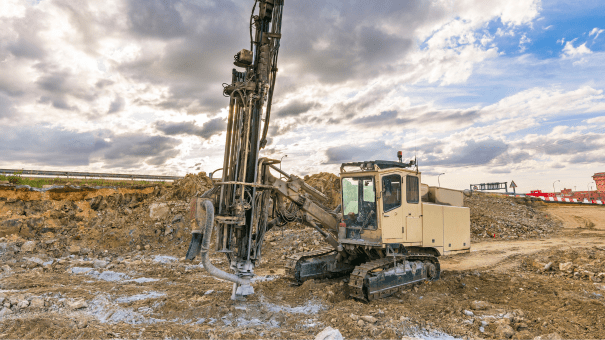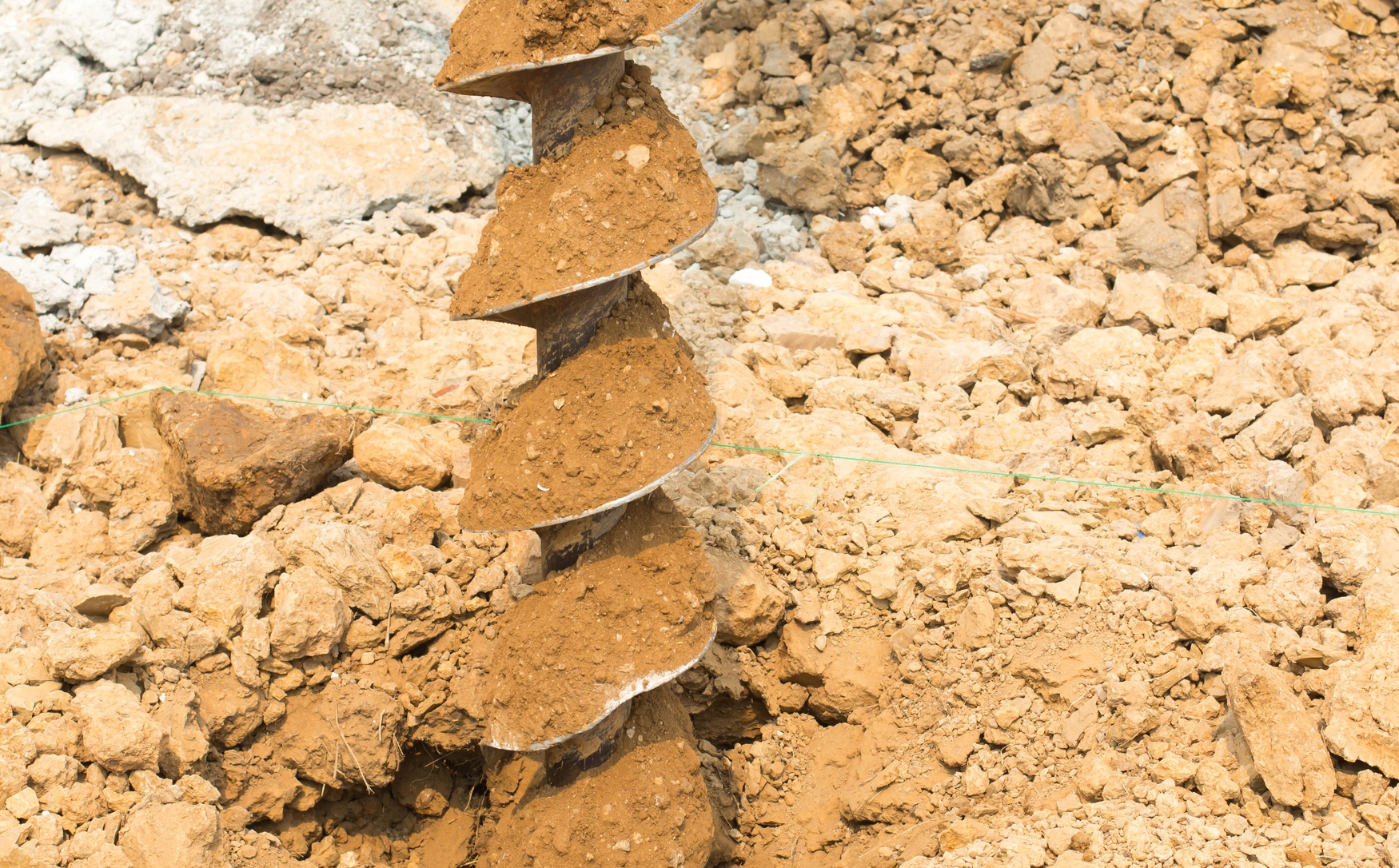Leading Factors to Work With a Geotechnical Specialist for Your Construction Tasks
Leading Factors to Work With a Geotechnical Specialist for Your Construction Tasks
Blog Article
The Significance of Geotechnical Engineering in Dealing With Environmental Obstacles and Enhancing Building And Construction Safety
Geotechnical engineering works as a cornerstone in the intersection of environmental stewardship and building and construction safety and security, supplying critical understandings into the habits of dirt and rock under different conditions. This self-control not only addresses pushing environmental obstacles such as soil erosion and groundwater protection but likewise boosts the robustness of facilities against all-natural hazards. By executing tactical website investigations and customized reduction measures, geotechnical designers play an essential role in securing both human lives and environmental integrity. Yet, the complexities of these difficulties raise important concerns concerning the future instructions of this area and its ramifications for sustainable advancement.

Role of Geotechnical Design
Geotechnical design plays a crucial role in the design and construction of infrastructure by attending to the behavior of soil and rock products under various conditions. This field of design is vital for understanding the communication in between structures and the ground, which includes establishing the load-bearing capability of dirt, examining stability, and anticipating potential settlement or failure.
Geotechnical engineers are liable for conducting website investigations, which include tasting and screening soil and rock to gather information on their chemical and physical properties. This information is important for creating foundations, maintaining walls, and other earth-retaining frameworks that guarantee safety and durability. Geotechnical engineering educates the selection of appropriate building techniques and products, consequently lessening risks connected with soil actions.
Moreover, the combination of geotechnical design concepts into urban preparation and ecological monitoring is critical for attending to obstacles such as ground contamination and groundwater monitoring. By recognizing geotechnical elements, designers can develop lasting options that improve the resilience of infrastructure versus natural dangers, while additionally promoting ecological stewardship. Inevitably, the duty of geotechnical engineering is crucial for achieving safe, resilient, and ecologically conscious construction methods.
Dirt Erosion Mitigation
Soil disintegration postures a significant danger to both ecological stability and framework stability, affecting approximately 24 billion bunches of productive soil lost annually worldwide. This phenomenon is aggravated by factors such as logging, urbanization, and inadequate agricultural practices. Geotechnical design plays a crucial duty in developing efficient soil disintegration mitigation techniques that protect both the environment and building projects.
One strategy involves the execution of erosion control techniques such as plant life growing, which stabilizes dirt via origin systems. Additionally, the building of retaining balconies and walls can effectively minimize surface drainage and protect susceptible areas from disintegration. Proper water drainage style is additionally vital; it reduces water buildup and directs excess overflow far from vital frameworks.
Furthermore, geotechnical designers employ dirt stabilization techniques, such as the application of geotextiles and eco-friendly floor coverings, to boost soil cohesion and avoid deterioration - geotechnical engineer description. Routine monitoring and analysis of erosion-prone websites make it possible for timely treatments, guaranteeing lasting sustainability. By integrating these methods, geotechnical design not just reduces the effects of soil disintegration yet also adds to the durability of infrastructure versus ecological challenges, eventually cultivating a more secure and a lot more lasting developed environment
Groundwater Security Approaches
Groundwater functions as a crucial source for drinking water, farming, and commercial processes, making its protection crucial for environmental sustainability and public health. Effective groundwater security approaches are essential in alleviating contamination risks and guaranteeing the durability of this source.

Normal tracking of groundwater quality is additionally crucial, enabling early discovery of contamination resources and helping with timely remediation efforts. Utilizing innovative innovations, such as geophysical studies and remote noticing, help in determining possible hazards to groundwater reserves.
Furthermore, public education and stakeholder engagement are vital, fostering area support for groundwater defense efforts. geotechnical engineer description. By incorporating governing steps, technical innovations, and area involvement, we can create a thorough framework that safeguards groundwater resources while advertising sustainable growth and building and construction methods
Landslide Threat Monitoring
Landslides position significant hazards to both human safety and infrastructure, making reliable danger management approaches necessary. Geotechnical design plays a vital role in identifying, assessing, and mitigating landslide dangers. A thorough understanding of slope security, dirt mechanics, and hydrology is vital for check my reference developing reliable threat administration strategies.
The primary step in landslide threat management includes thorough website investigations, which consist of geological mapping and dirt screening. These investigations assist designers evaluate the capacity for landslides by recognizing important elements such as incline angles, soil structure, and water material. Utilizing sophisticated modern technologies such as remote noticing and geophysical studies can boost the accuracy of these assessments.
Once dangers are recognized, suitable mitigation measures can be executed. These might consist of engineering remedies such as preserving wall surfaces, drain systems, and incline stablizing strategies. Moreover, monitoring systems ought to be established to discover signs of ground motion and modifications in water degrees, permitting for aggressive treatments.

Enhancing Building Safety And Security
Construction sites often present a myriad of dangers that can jeopardize worker safety and job stability. Geotechnical engineering plays a crucial role in boosting construction safety and security by supplying necessary understandings into subsurface problems. Through thorough dirt and rock analysis, geotechnical engineers can recognize potential threats, such as dirt instability, groundwater problems, and seismic vulnerabilities, which might endanger the safety of building activities.
Implementing geotechnical options, such as appropriate foundation style and the use of preserving frameworks, minimizes these threats dramatically. These remedies not just make certain the stability of the frameworks being constructed however also produce a much safer working view publisher site environment for construction employees. Additionally, extensive surveillance and assessment of site problems throughout the construction procedure are critical. Utilizing advanced technologies like ground-penetrating radar and inclinometer systems enables real-time data collection, permitting timely treatments when threats are detected.
Furthermore, cultivating a society of safety and security through training and adherence to established security procedures even more boosts construction site safety. By incorporating geotechnical experience right into the preparation and implementation phases, construction projects can attain greater security requirements, eventually securing employees and making certain effective job conclusion.
Final Thought
In conclusion, geotechnical design serves as a vital discipline in dealing with environmental obstacles and promoting building and construction security. Through reliable dirt disintegration mitigation, groundwater defense strategies, and landslide threat administration, geotechnical engineers add to the advancement of resistant infrastructure.
Geotechnical engineering serves as a keystone in the crossway of environmental stewardship and building and construction safety and security, giving essential insights right into the actions of soil and rock under various conditions. Geotechnical engineering educates the option of proper building methods and products, thus decreasing risks associated with dirt actions.
Geotechnical engineering plays a critical duty in creating efficient dirt erosion reduction approaches that protect both the setting and building projects.
In addition, geotechnical engineers employ dirt stablizing techniques, such as the application of geotextiles and biodegradable mats, to enhance soil cohesion and prevent degradation. Via comprehensive dirt and rock analysis, geotechnical designers can identify possible threats, such as soil instability, groundwater problems, and seismic vulnerabilities, which from this source may jeopardize the security of building and construction tasks.
Report this page